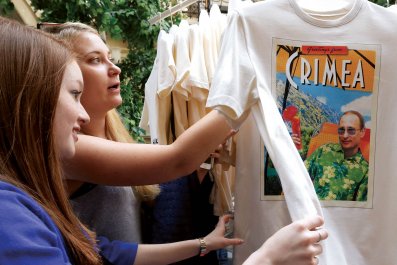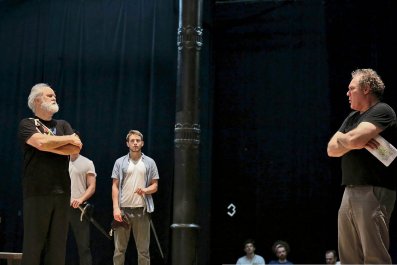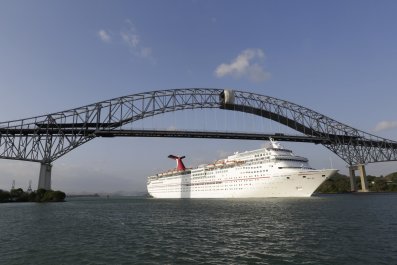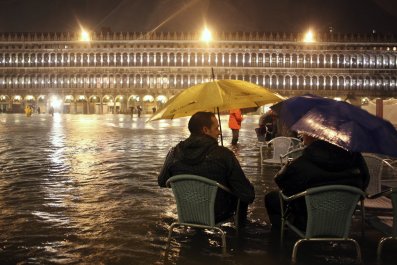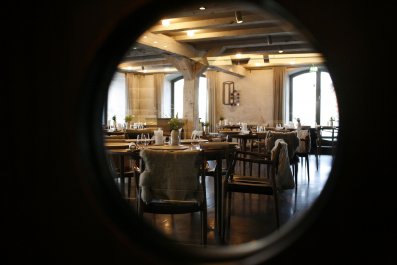If you, like me, are of a nostalgic disposition, then you think the Hamptons have always been dying. Maybe you think the slide toward trashy irrelevance started in 1659, when Chief Wyandanch sold 90,000 acres of virgin land to Lion Gardiner, an arriviste from the Old World. Perhaps the bell tolled in 1870, with the arrival of the ribald artists of the Tile Club, whose house in East Hampton came to be known as Rowdy Hall (today, fittingly enough, the name belongs to a gastropub in town). Maybe you think the decline commenced a little bit later, in 1985, when the modernistic Quonset hut that once belonged to the painter Robert Motherwell was torn down by the investment banker Stephen Peck. Motherwell told the New York Times that the destruction of the icon was a certain omen of the barbarian invasion.
I suppose that to be a romantic is to know, as the chanteuse Lana Del Rey put it, that we are born to die. But some deaths are graceful, while others are gruesome. The Hamptons suffered from the latter kind on June 2, 2014, when the Kardashian clan opened its Dash boutique in Southampton. The fall will bring Kourtney & Khloe Take the Hamptons, the latest of the family's surreal reality shows, which have become fine, if inadvertent, advertisements against plastic surgery. The apocalypse will reportedly commence shortly thereafter.
Let's just get one thing out of the way before going any further: it's no use pretending that, until the hedge-funders arrived in Sagaponack and the hipsters manqué tattooed the hell out of Montauk, the Hamptons were an enlightened seaside Arcadia of comity and grace. There were plenty of blowhards, bigots and boors, not to mention people who really shouldn't be wearing madras. But at least the summer crowd, whether anciently or recently moneyed, kept their histrionics behind the hedgerows of Gin Lane and Lily Pond Road, visible only to their ubiquitous gardeners and caterers, perhaps gossiped over during pre-dinner cocktails, but never escaping too far down the Montauk Highway.
There were, of course, exceptions, most notably Lizzie Grubman's 2001 assault, via a Mercedes in reverse, upon a crowd at the Conscience Point Inn nightclub in Southampton. While no one died, she managed to deftly crack the facade of WASPish gentility that sat over the land like August humidity. Others have followed inglorious, drunken suit, including former NBA player Jason Kidd, former New York schools chancellor Cathie Black and singer Billy Joel. They've all done their small part in leaving the Hamptons a little more trashy than they found them.
Nothing, however, can compare to the Kardashian invasion. The Kardashians represent something new and more pernicious, a cancer that has finally arrived in all its malignant furor. All the rest was symptoms, from Sex and the City to P Diddy's astoundingly lavish White Parties ("Have I read The Great Gatsby? I am the Great Gatsby," the rap impresario is reported to have once said, perhaps not aware of how the novel ends) to the unfailingly ominous arrival of The Real Housewives of New York. This is the full-blown disease. And it is one the Hamptons unequivocally deserve, a mirror held up to summer society, in which it can see its own smoothly-tanned reflection. At least they didn't get the cast of The Jersey Shore. Florence must still be recovering from that.
"This is a low blow, the Kardashians," says Steven Gaines, a longtime Hamptons resident whose Philistines at the Hedgerow remains by far the finest account of what money has wrought on the East End. "The elegance of it is washing away," he complains. "It's becoming like a theme park" for those who want only to gawk at celebrities, or perhaps to shop at one of Main Street's four Ralph Lauren stores.
The Dash boutique is housed in a low, modest white building set far back from Jobs Lane, a street that dates back to the 17th century. A chalkboard beckons: "Dolls, this way to Dash!" but I saw only middle aged-couples trooping toward the storefront. The clothes are expensive and flashy, yet still somehow boring: "exuberantly tacky," in the words of two New York Observer reporters who crashed the store's opening. A couple of exceedingly attractive young women worked the bright and empty white room. They exuded a knowing, calculated proximity to fame: by buying something from them, you are touched by fame's radiant glow, consorting with a Kardashian brand whose tentacles are reaching into every hyper-leveraged, overly vitreous nook of the globe: West Hollywood, South Beach, SoHo. Soon enough, they will be in London and Paris, not to mention Mumbai and Shanghai. We all will be right there with them.
One of the women smiled at me, managing both politeness and viciousness in a single elongation of the lips. Feeling deeply out of place, I quickly fled, past 75 Main, where the extraordinary come to eat ordinary food, past roadsters with Union College decals, past teenagers in Nantucket reds, back to my junky bike, which I rode home past the East End's few remaining vineyards and farms, past hedges that hide the mansions of billionaires from Manhattan, London and Shanghai, past the seaside mansion of Ira Rennert, which at 110,000 square feet is one of the largest houses in the United States.
Only after the Kardashians arrived did the Hamptons realize that the Hamptons did not want the Kardashians there. After they brought a film crew to the once-quiet Indian Wells beach in the once-quiet village of Amagansett, an East Hampton town trustee named Diane McNally suggested that if the Kardashians appear on the sand with film crew in tow again, they be apprehended by the authorities: "If you see them on the beach, call the police, because they're not there legally. Get 'em off. Get 'em outta here." Actually, it turned out that the Kardashians had the necessary permits. So the show will go on.
McNally is not just one of the summer people whose annoyance at all things Manhattan too easily turns, come Memorial Day, into annoyance at all things Hampton. She is a 12th-generation native of East Hampton, a group known as Bonackers. Her parents worked for the wealthy of the Summer Colony; her husband is an East End native, too. She points out that this community is used to having a lot "very famous and very wealthy individuals," only that in previous generations, those individuals were "low-key." No longer; McNally thinks that when the Kardashians' Hamptons reality series airs, her beloved village will be "abused" and "laughed at" as just another déclassé playground for people who like to flash black AmExes at bad restaurants and worse clubs.
McNally is saddened by this, aware that she is witnessed the end of something. "This is not," she says, "the reputation East Hampton should have."
The Kardashians aren't much for nostalgia, though. Nor are they stupid, which is the most frightening thing about them. Kim, clearly the brains behind the family racket, turned a third-rate sex tape with a fourth-rate rapper (the woebegone Ray J) into international fame and an income of $28 million a year, largely from public appearances and branding deals. Not all that long ago, she was the unknown friend of Paris Hilton, a hotel heiress who had more money and more a intriguing sex tape and, at the very least, a name with the lingering trace of nobility. But for the Kardashians, that must seem like prehistory, England before the Norman invasion.
Speaking of invasions, note the theme to the various Kardashian shows: Kourtney and Kim Take New York, Kourtney and Kim Take Miami. They are like an invasive species, identifying paths of least resistance through adiposal layers of human vanity and indolence. They know, too, that there are some small settlements beyond their rapacious grasp: I somehow can't imagine Kardashians Take Dark Harbor or Kardashians Take Mackinac Island. Having set up shop, they unfailingly manage to attract just the right balance of awe, curiosity and outrage, a combustible mixture the experts call good publicity.
It seems almost quaint, today, that some of the Hamptons old guard complained during the 1980s, when the nouveau riche started gobbling up some of the best properties along Route 27. In 1981, for example, New York magazine suggested that the Hamptons were done and that it was time to vacation in Connecticut. Yeah, okay. As a matter of fact, Gordon Gekko is a veritable Voltaire in comparison to Bruce Jenner, the freakishly synthetic patriarch of the Kardashian hive. Today, any laments for the Hamptons of artists and writers and slightly scuffed patricians must be as ludicrous as trying to claim that SoHo still belongs to the painters, San Francisco to the gays, East Village to the punks, Austin to the indie rockers, New Orleans to the jazz musicians. In image, that may be the case. As for reality, well, go take a look yourself in your Uber ride.
Image is where the Kardashians thrive. They are certainly not for the old rich, nor for the new rich who want only to ape the old rich. Instead, the Kardashians market themselves to the not-at-all rich, the aspirationals who see in Kim and her sisters a trio of go-getters and will spend money in tribute to and emulation of them. Accordingly, the Kardashian Kollection is sold in Sears, not Bloomingdale's. The other products Kim endorses or has endorsed (QuickTrim Sugar & Carb Cheater, TRIA Laser Hair Removal and Midori Liqueur; and, to top it all off, the thankfully short-lived Kardashian Kard, a nakedly predatory scheme hoping to lure the young and/or financially unsophisticated) strongly suggest that she is preying on the insecurities of lower-middle class white women, ones who do not scoff snobbishly at Kim, her figure, her crass displays of sexuality or her even more crass displays of wealth. The Kardashian brand runs on a fuel of class resentment, conspicuous consumption, body-image anxiety, jealousy, ambition and plain old human loneliness.
Place is just another facet of the Kardashian faux-luxury portfolio. You are invited, via watching their Chekhov-on-meth shows, to vacation with the brood. Did you know that Kim and Kourtney recently dined at 75 Main, later posing with creepy owner Zach Erdem, his shirt wide open and hair apparently slicked with some of the restaurant's fry grease? Did you know that Kourtney's bracingly sociopathic boyfriend Scott Disick "rang in his 31st b-day with a big 1OAK bash"? And you, average American, can do the same, though your best bet is to head right to the Dash boutique, where you can mainline the Kardashian experience for a couple hundred bucks of clothing made by a 13-year-old kid in Bangladesh.
I do have to admit there is something unironically thrilling in watching the Kardashians sniffing for exclusivity and wealth the way a beagle sniffs for bedbugs. Many of the places they've invaded were not-all-that-long-ago deeply unwelcoming to African-Americans, Jews, homosexuals and other outsiders. The Kardashians' arrival inevitably signals a messy American egalitarianism, which may be the only good thing about them. If they are welcome, then everyone else is (well, as long as you haven't maxed out your credit limit). And you can practically taste the schadenfreude in the headlines about the Kardashian arrival in the Hamptons: "Filming forKourtney & Khloe Take the Hamptons Are 'Ticking People' Off—And It's Just Begun!," announced InTouch magazine just a tad too happily. The coddled rich can hide no longer. And this revolution will very much be televised.
Not everyone here is worried. The weekly East Hampton Star, which occupies an elegant wooden building on Main Street, has been reporting on the Summer Colony since 1885, and has belonged to the Rattray family since 1935. Its one-time editor, Jeannette Edwards Rattray, used to sign her gossip columns "One of Ours." One of her descendants, David Rattray, is current the editor of the Star, and told me he is not terribly concerned about the Kardashian blitzkrieg. "The Ks are probably a good thing to gin up more short-term rentals and for those running restaurant clip joints that prey on daytrippers," Rattray wrote to me in an email, "but for the rest of us, they just blend into the summertime noise." It is undeniable, however, that the noise only gets louder with each passing summer.
In part, the bit about the noise is true, with the new service Blade now offering "crowd-sourced" helicopter service to the Hamptons from Manhattan. During the short flight, you can sip champagne while laughing at the workaday suckers stuck on Route 27, impatient to taste the Hamptons glory they've been promised, or that they have somewhat recklessly promised to themselves, unaware of the costs that glory would extract, dignity now among them. Or you could just vacation in Connecticut.
Correction: An earlier version of this story said that Scott Disick was Kourtney Kardashian's husband, not her boyfriend.





